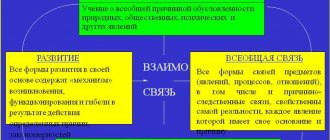The concept of subjective perception
Definition 1
Subjective perception is the internal state of a person, which distorts the objective picture of the world.
The degree of perception is always different, but there are moments where subjectivity is an integral part of the fact that a person perceives the images in front of him due to his individual qualities and life experiences that have been acquired throughout time. A person is a reflection of his inner world, his fears, joyful moments and many other feelings that always take place.
Another perception is an experience that gives emotions that cannot be expressed in words. When a person is worried, he has no other thoughts, he wants to be alone, alone with himself. Experience is a process when emotional outbursts are reflected within the subject, which can smoothly flow into tears. Therefore, subjective perception may be associated with human behavior, which may even be difficult to explain.
Subjective perception is the truth that reflects or distorts the information received by a person. Shades of subjectivity extend to all stages of perception and processing of certain information. This perception has its positive and negative sides. But sometimes it happens that we perceive other people’s thoughts and feelings, which we pass through ourselves, due to subjectivity, this corrects the distorted picture, which has already been distorted by our thoughts, thereby correcting it in the right way.
If we take a book, then the reality in it is already so distorted that our attention highlights the necessary information, and the rest is simply muffled. Distortion of perception is already present in the world around us, thereby creating the impression of dominance over information that comes from the outside.
Due to subjective perception, in reality, there are branches of different styles and divine creations in art.
The truth of subjective perception is a person’s perception of something beautiful and great.
About the subjectivity of our perception and the difficulties of tolerance
If we take a hypothetical blind person and an equally hypothetical deaf person, then with a high degree of probability we can say that it is the deaf person who will cause irritation to others.
The defect of a blind person is obvious; for the majority of fellow citizens, a visually impaired or completely blind person will evoke obvious pity and sympathy. Understanding, participation, desire to help.
Moreover, blindness in the human mind is in no way connected with reduced intelligence, rather the opposite. We have encountered the blind sage many times in books and in films. In our country, a person with glasses is a priori classified as an intellectual and smart guy.
It never occurs to us to laugh at the blind. A blind man does not scare us, if only a little, with his tragedy underlying his blindness. A blind person is more likely to be respected, especially if he is well adapted to everyday life, educated, and works.
With the deaf and hard of hearing, it's just the opposite. Their deficiency is not visible, not obvious, outwardly people with hearing problems look completely normal, but...
But the manner of asking the same thing over and over again, the tendency to speak too loudly, not always necessary vocal modulations, the tendency to support one’s explanations with violent gestures are classified by the interlocutor as something very annoying and related more to the mental state and level of intelligence of the “strange” interlocutor than to his hearing
Yes, yes, we perceive the deaf, hard of hearing and deaf-mute people as people with mental illnesses, at best as “normal, but stupid”. This is a very common mistake in our thinking, almost a psychological phenomenon.
Of course, this is not true. The level of intellectual and mental development, if it correlates with a person’s level of hearing, is very indirect, only due to the social isolation that occurs in the deaf. But the average poorly educated citizen from the general mass is not interested in this; for him, a deaf person is equal to a fool, a fool at whom one can and should laugh. He doesn’t hear anything, so he won’t be offended. Killer logic, alas and ah.
No, I sincerely hope that this is not about you, but have you never talked to a somewhat deaf old woman and she didn’t answer you with offense that she was deaf, yes, but not stupid!! Why are you treating her like a child?
For the same reason, the phenomenon of psychophobia extends to people who are deaf and hard of hearing. Not very literate comrades quite seriously believe that all types of deafness are inherited through genes, which means that a child from a marriage with a deaf spouse will be sick. That the employee is deaf or hard of hearing and it is dangerous to hire him. That the deaf are unreliable, and sometimes even asocial, because they don’t hear anything. “And in general, they need to be sent to a boarding school!!”
Actually, outbursts of anger do occur in people who are hard of hearing, and they are similar to outbursts in children with autism. Anger is caused by the difficulty of social contacts with those who usually hear, despair from misunderstanding, the inability to reach the interlocutor, and humiliation.
Blind people are less stigmatized about their own inferiority than deaf people! Deaf and hard of hearing people are filled with a sense of their own inferiority, rejection, and they are not stigmatized by doctors, but by those around them! Children in kindergarten, classmates at school, inattentive teachers, uneducated relatives, rude colleagues. All of us.
As a child, did you ever run “to see the deaf and dumb”? Here it is!
What then about people with a different skin color, sexual orientation, severe cognitive impairment, and so on. This brings me to the question of how tolerant we are of each other.
Threat.
Did you know that sign language has punctuation marks? That deaf people from different countries have their own accents? And that they really sing with their hands and it’s not funny at all. * Notes on blogs are the property of their authors, their publication occurs with their consent and without cuts, the author's spelling and punctuation are preserved. The editors of the Susanin news agency may not share the author’s opinion.
Forms of subjective perception
Let's consider the forms of natural phenomena endowed with subjective perception:
- Animism is a system of ideas about the surrounding world, the basis of which is the belief in the soul of natural objects, the ability of independent and active actions. Subjectivation has an ancient form, it lies in the fact that every natural phenomenon or object has its own spirit, which causes different weather conditions and draws attention to how a person relates to nature;
- Anthropomorphism is a system of representing the surrounding world, which contains the behavior and properties of a person, reflecting his character in nature. Objects of nature can have feelings, thoughts and actions that are inherent in a person from birth. This is a consequence of the fact that objects can be considered as living people, only under a different guise;
- Personification (personification) - this system is the embodiment of a particular object, which is endowed with specific human factors in abstract concepts and ideas;
- Subjectification is the endowment of processes of natural objects with the functions of the subject and his perception. This process shows that a person can actually endow various animals and plants with subjective properties through conversation. This form of perception is a very powerful tool for shaping attitudes towards nature and the world in general. Therefore, the specificity of human perception of the functions of nature may have emotions that will be displayed in natural phenomena, but invisible to the human eye. Man is a subject who endows the world with his own characteristic features, which then become reality in the natural world.
Lecture “Properties of perception as a subjective image of the world”
Perception (perception, from Latin perceptio) is a cognitive process that forms a subjective picture of the world. This is a mental process consisting of reflecting an object or phenomenon as a whole with its direct impact on the senses. Perception is one of the biological mental functions that determine the complex process of receiving and transforming information received through the senses, forming a subjective holistic image of an object that affects analyzers through a set of sensations initiated by this object. As a form of sensory reflection of an object, perception includes the detection of the object as a whole, the discrimination of individual features in the object, the identification of informative content in it that is adequate to the purpose of the action, and the formation of a sensory image. Perception is much more than the transmission of neural impulses by the nervous system to certain parts of the brain. Perception also presupposes the subject's awareness of the very fact of stimulation and certain ideas about it, and for this to happen, it is first necessary to sense the “input” of sensory information, that is, to experience a sensation. In other words, perception is the process of comprehending the stimulation of sensory receptors. There are reasons to view perception as a task that involves focusing on a sensory signal, analyzing and interpreting it to create a meaningful representation of the world around us.
Properties of perception
Objectivity - objects are perceived not as an incoherent set of sensations, but constitute images of specific objects. Structurality - the object is perceived by consciousness as a modeled structure abstracted from sensations. Apperception - perception is influenced by the general content of the human psyche. Contact (constancy) - perception is influenced by the circumstances in which it occurs. But despite this, the perception remains relatively unchanged. Activity - at any given time we perceive only one object. The nature of the activity of perception is determined by the very nature of our consciousness. Meaningfulness - an object is consciously perceived, mentally named (associated with a certain category), belongs to a certain class. Comprehension consists of stages: Selection - selection of an object of perception from the flow of information Organization - an object is identified by a set of characteristics Categorization and attribution to an object of the properties of objects of this class Perception factors External Size Intensity (physically or emotionally) Contrast (contradiction with the environment) Movement Repeatability Novelty and recognition Internal Perceptual setting - the expectation to see what should be seen from past experience. Needs and motivation - a person sees what he needs or what he considers important. Experience - a person perceives that aspect of a stimulus that has been taught by past experience. Self-concept - the perception of the world is grouped around the perception of oneself. Personal characteristics - optimists see the world and events in a positive light, pessimists, on the contrary, in an unfavorable one. Three mechanisms of perception selectivity: The principle of resonance - what corresponds to the needs and values of the individual is perceived faster than what does not correspond. The principle of protection is that something that opposes a person’s expectations is perceived worse. The principle of alertness - what threatens a person’s psyche is recognized faster than others. Perception, its types and properties
External phenomena that affect our senses cause a subjective effect in the form of sensations without any counter activity of the subject in relation to the perceived impact. The ability to feel is given to us and all living beings with a nervous system from birth. Only humans and higher animals are endowed with the ability to perceive the world in the form of images; it develops and improves in them through life experience.
In contrast to sensations, which are not perceived as properties of objects, specific phenomena or processes occurring outside and independently of us, perception always appears as subjectively correlated with the reality existing outside of us, framed in the form of objects, and even in the case when we have dealing with illusions or when the perceived property is relatively elementary, causing a simple sensation (in this case, this sensation necessarily relates to some phenomenon or object, is associated with it).
Sensations are located in ourselves, while the perceived properties of objects, their images are localized in space. This process, characteristic of perception in its difference from sensations, is called objectification.
Another difference between perception in its developed forms and sensations is that the result of the occurrence of sensation is a certain feeling (for example, sensations of brightness, loudness, saltiness, pitch, balance, etc.), while as a result of perception there is a an image that includes a complex of various interrelated sensations attributed to a person by awareness of an object, phenomenon, or process. In order for a certain object to be perceived, it is necessary to perform some kind of counter-activity in relation to it, aimed at studying it, constructing and clarifying the image. As a rule, this is not required for the sensation to appear.
Individual sensations are, as it were, “tied” to specific analyzers, and the impact of a stimulus on their peripheral organs—receptors—is sufficient for the sensation to arise. The image that emerges as a result of the perception process presupposes the interaction and coordinated work of several analyzers at once. Depending on which of them works more actively, processes more information, receives the most significant signs indicating the properties of the perceived object, types of perception are distinguished. Accordingly, visual, auditory, and tactile perception are distinguished. Four analyzers - visual, auditory, skin and muscle - most often act as leaders in the process of perception.
Perception, thus, acts as a meaningful (including decision-making) and meaningful (associated with speech) synthesis of various sensations obtained from integral objects or complex phenomena perceived as a whole. This synthesis appears in the form of an image of a given object or phenomenon, which develops during their active reflection.
Subjectivity, integrity, constancy and categoricality (meaningfulness and significance) are the main properties of the image that develop in the process and result of perception. Objectivity is a person’s ability to perceive the world not in the form of a set of unrelated sensations, but in the form of objects separated from each other that have properties that cause these sensations. The integrity of perception is expressed in the fact that the image of perceived objects is not given in a completely finished form with all the necessary elements, but is, as it were, mentally completed to some holistic form based on a small set of elements. This also happens if some details of an object are not directly perceived by a person at a given moment in time. Is constancy defined? as the ability to perceive objects as relatively constant in shape, color and size, and a number of other parameters, regardless of the changing physical conditions of perception. The categorical nature of human perception is manifested in the fact that it is of a generalized nature, and we designate each perceived object with a word-concept and assign it to a specific class. In accordance with this class, we look for and see in the perceived object signs that are characteristic of all objects of this class and are expressed in the volume and content of this concept.
The described properties of objectivity, integrity, constancy and categorical perception are not inherent in a person from birth; they gradually develop in life experience, partly being a natural consequence of the work of analyzers and the synthetic activity of the brain.
Most often and most of all, the properties of perception have been studied using the example of vision, the leading sensory organ in humans. Representatives of Gestalt psychology, a direction of scientific research that emerged at the beginning of the 20th century, made a significant contribution to the understanding of how individual visually perceived details of objects form their integral picture—an image. in Germany. One of the first to propose a classification of factors influencing the organization of visual sensations into images in line with Gestalt psychology was M. Wertheimer. The factors he identified are:
1. The proximity to each other of the elements of the visual field that caused the corresponding sensations. The closer to each other spatially in the visual field the corresponding elements are located, the more likely they are to combine with each other and create a single image.
2. Similarity of elements to each other. This property is manifested in the fact that similar elements tend to unite.
3. The “natural continuation” factor. It manifests itself in the fact that elements that appear as parts of figures, contours and shapes familiar to us are more likely in our minds to be combined into precisely these figures, shapes and contours than into others.
4. Closedness. Does this property of visual perception appear? as the desire of the elements of the visual field to create holistic, closed images.
The principles of the perceptual organization of visual perception are illustrated in Fig. 36. Lines located closer to each other in row A are more likely to unite with each other in our perception than those that are far apart. Adding horizontal, multidirectional segments to separate, far apart vertical lines in row B encourages us, on the contrary, to see complete figures in them, and not in closely spaced lines. In this case these are squares. The corresponding impression intensifies even more (row B) and becomes irreversible if the contours turn out to be closed.
It turned out that a person’s perception of more complex, meaningful images occurs differently. Here, first of all, the mechanism of the influence of past experience and thinking is triggered, highlighting the most informative places in the perceived image, on the basis of which, by correlating the information received with memory, one can form a holistic idea about it. An analysis of recordings of eye movements carried out by A. L. Yarbus showed that elements of planar images that attract a person’s attention contain areas that carry the most interesting and useful information for the perceiver. Upon careful study of such elements, on which the gaze most of all stops in the process of viewing paintings, it is discovered that eye movements actually reflect the process of human thinking. It has been established that when examining a human face, the observer pays most attention to the eyes, lips and nose. A person’s eyes and lips are indeed the most expressive and moving elements of the face, by the nature and movements of which we judge a person’s psychology and his condition. They can tell the observer a lot about a person’s mood, his character, attitude towards people around him, and much more.
Often, when perceiving contour and hatched images, as well as corresponding elements of real objects, a person may experience visual illusions. There are many such illusions known. These are illusions associated with a distortion of the contour of a circle presented against a background of fan-shaped diverging lines (A), and a distortion of the image of a square against a background of concentric circles (B).
The presence of illusions in the sphere of perception, which can be caused by a variety of reasons, depending both on the state of the perceiving system and on the peculiarities of the organization of the perceived material, explains many errors, including “visions” of the so-called unidentified flying objects (UFOs), about which In recent years, a lot has been written in the press.
Let us dwell briefly on the mechanisms of perception of space, time and movement, which, together with the methods of perceiving the contours and content of meaningful figures of a planar type, form a black and white perceptual dynamic picture of the situation surrounding a person every day. The perception of space contains estimates of shape, size, distance to objects, distance between objects.
Three main groups of factors take part in the perception of the shape of objects:
1. The innate ability of nerve cells in the cerebral cortex to selectively respond to image elements that have a certain saturation, orientation, configuration and length. Such cells are called detector cells. Thanks to the properties of their receptive fields, they highlight very specific elements in the visual field, for example, light lines of a specific length, width and slope, sharp corners, contrasts, and breaks in contour images.
2. The laws of the formation of figures, forms and contours, identified by Gestalt psychologists and described above.
3. Life experience gained through hand movements along the contour and surface of objects, movement of a person and parts of his body in space.
The perception of the size of objects depends on the parameters of their image on the retina. If a person is not able to correctly estimate the distance to objects, then those of them that are actually far away and, therefore, form small images on the retina, are perceived by the person as small, although in fact they may be quite large. Those objects whose images on the retina increase are also subjectively perceived as increasing, although in reality their size may not increase. However, if a person is able to correctly estimate the distance to an object, then the law of constancy comes into play, according to which the apparent size of an object changes little with not very large changes in the distance to it or does not change at all. The same thing happens if a person knows that the object itself changes little, and only the size of its image on the retina varies.
In the perception of the size of objects, the muscles of the eyes and hand (in the case when a person feels an object with its help), and a number of other parts of the body take part. The more the muscle that traces an object along its contour or surface contracts or relaxes, the larger the object itself appears to a person. Consequently, the perception of magnitude correlates with the degree of contraction of the muscles following it. This, in particular, reveals the role of activity in perception.
Muscle movements are also involved in depth perception. In addition to them, accommodation and convergence of the eyes contribute to visually correct assessment of depth. Accommodation is a change in the curvature of the lens when adjusting the eye to clearly perceive near and distant objects or their details (focusing the image on the retina). Convergence is the convergence or divergence of the axes of the eyes, which occurs when we perceive objects approaching or moving away from a person, respectively. A certain angle is usually formed between the visual axes. It carries information about the distance to objects.
However, with the help of accommodation and convergence it is impossible to fully explain the perception and assessment of distance to objects, since these processes “work” within a limited range of distances: 5-6 meters for accommodation and up to 450 meters for convergence. At the same time, a person is able to distinguish the distance of objects from himself at much greater distances, up to 2.5 km. When assessing large distances, they most likely use information about the relative position of objects on the retina of the right and left eyes.
The perception and evaluation of motion is also based on the sequential use of information from several different sources. Some of them allow you to establish the very fact of movement, others to evaluate its direction and speed. The presence or absence of movement in the visual field is detected by motion or novelty detector neurons that are part of the neurophysiological apparatus of the orienting reaction (reflex). These neurons have a genetically determined ability to generate impulses when any object moves in the field of view.
The direction of movement can be assessed by the direction of movement of the reflected object on the surface of the retina, and can also be noted by the sequence of contraction-relaxation of a certain group of muscles of the eyes, head, and torso when performing tracking movements behind the object.
The fact that the perception of movement and its direction is physiologically connected, in particular, with the movement of the image on the retina, is proven by the existence of the illusion of movement, which usually occurs when two luminous point objects located in the field of view are illuminated one after the other at short intervals. from each other at a relatively short distance. If the time interval between the ignition of the first and second objects becomes less than 0.1 s, then the illusion of moving the light source from one position to another, from the first place to the second, appears, and the trajectory of the corresponding “movement” is even visually and illusorily traced by the subject. This phenomenon is called the “phi phenomenon”.
Another argument in favor of the same conclusion about the psychophysiological mechanism of motion perception can be the so-called autokinetic effect. This phenomenon is the apparent, illusory movement of a stationary luminous point in the dark. In particular, an experiment with a group of people, which was discussed in the third chapter of the textbook, was based on it. The autokinetic effect occurs in many people if a fixed point in the visual field is the only visible object, that is, if its position cannot be identified in space, compared and assessed relative to any other visible object.
The speed of movement is apparently assessed by the speed of movement of the image of an object on the retina, as well as by the speed of contraction of the muscles involved in tracking movements.
The mechanism of human perception of time is often associated with the so-called “biological clock” - a certain sequence and rhythm of biological metabolic processes occurring in the human body. The most likely candidates for the role of a biological clock are the rhythm of cardiac activity and metabolism (metabolic processes) of the body. The latter is partially confirmed by the fact that when exposed to medications that affect the speed of metabolic processes, the perception of time can change. For example, quinine and alcohol most often slow down the subjectively perceived passage of time, while caffeine speeds it up.
The subjective length of time depends in part on what it is filled with. Interesting and meaningful activities seem to us shorter in time. The one that is filled with meaningless and uninteresting activities lasts much longer for our perception. In one experiment, a person spent four days in isolation, being in a soundproof room and doing whatever he wanted during that time. At certain intervals, the experimenter called him and asked what time it was (the subject himself did not have a watch). It turned out that during the first day of his stay in these conditions, when the subject was still finding interesting activities for himself, his subjective time accelerated and ran ahead by almost four hours. Then his “internal clock” gradually began to lag behind and by the end of the fourth day of his stay in isolation it was already off by about forty minutes compared to real time.
There are large individual, particularly age, differences in the perception of the passage of time. In addition, for the same person, time estimates can vary widely depending on his mental and physical state. When you are in a good mood, time passes a little faster than usual, and when you are frustrated or depressed, it moves slower.
The phenomenon of erroneous (false) or distorted perception is called an illusion of perception. Illusions are observed in any type of perception (visual, auditory, etc.). The nature of illusions is determined not only by subjective reasons, such as attitude, direction, emotional attitude, etc., but also by physical factors and phenomena: lighting, position in space, etc. This topic is covered in more detail in my test work for psychological practical work.
1.3 Laws of perception
The perception of a person, whose task is to form correct images of the surrounding reality, is subject to certain laws.
The speed of contraction of the muscles associated with the organs of tracking the object, the type of muscles contracted can convey information about the nature of the movements of the object itself. Consequently, the first and fundamental law of perception is its direct connection with the work of muscles, with various kinds of movements that carry multifaceted information about the perceived objects.
Another important law of perception is the relative stability of already formed images, especially when their functioning is associated with thinking. In order for the perception to be correct, constant exercises and a continuous influx of information into the central nervous system are necessary to correct the incorrectly formed image.
If images of visual perception related to external objects reveal their stability or instability depending on the constant influx of information confirming their correctness or error, then the stability of images of internal states associated with bodily sensations is explained by the constancy of the operating deep structures in the brain mechanism. This is evidenced by a well-known fact called a phantom limb.
The question of how our perception is influenced by the external world and internal experience has long been discussed by scientists, but a final answer has not yet been received.
The psychology of the senses has so far not been able to fully explain how all the information, including abstract knowledge (for example, thinking patterns, intuition, gestalt structures of perception, etc.) that we have, can flow through receptors. The considered factors indicate that at least part of what is included in the content of our images is not directly related to reality. This requires the creation of a theory of perception that would take into account and satisfactorily explain the many available factors. Since the time of the English philosopher and psychologist J. Locke, who was one of the first to become interested in this problem, many concepts of perception have been proposed. One of them was called nativist (from the word “nature” - nature). According to it, perception is derived from the “mental abilities” supposedly existing in humans by nature. Another theory states that image formation is the result of learning, thinking and experience. Our brain gradually accumulates information about the world in the form of memory traces, in the form of mental attitudes, general ideas, and concepts. They directly influence perception, determining the content, meaning and nature of the emerging images.
Perception should be considered as an intellectual process associated with an active search for signs necessary and sufficient for forming an image and making decisions. The sequence of acts included in this process can be imagined as follows:
The primary selection of a set of stimuli from the flow of information and the decision that they relate to the same specific object.
Searching in memory for a complex of features similar or similar in composition to sensations, comparison with which of what is perceived allows us to judge what kind of object it is.
Assigning a perceived object to a certain category, followed by a search for additional signs that confirm or refute the correctness of the hypothetical decision made.
The final conclusion about what kind of object it is, with the attribution to it of not yet perceived properties characteristic of objects of the same class.
2. Psychology of perception
Perception is a direct, sensory-objective reflection of the external world. Based on perception, the activity of other mental processes - memory, thinking, imagination - is possible. Perception underlies individual human cognitive development.
Perception is a reflection in the human mind of objects, phenomena, and integral situations of the objective world with their direct impact on the senses. In the processes of perception, a holistic image is formed: the image of an object, the image of a situation, the image of another person, etc. The image of perception is often referred to as a perceptual image.
An integral part of the process of perception is sensation as a reflection of individual aspects of objects and phenomena. Sensation performs the function of orienting the subject in the most elementary, immediate properties of the objective world. If perception reflects holistic objects and situations, then sensation provides information about individual elements of objects or situations. Looking at the table, we perceive it as an integral structure, as an integral object; at the same time, the senses inform us about the individual properties of the table (for example, its color); touching the table with our palm, we feel warmth or cold, smoothness or roughness of the surface, etc.
Basic types and properties of perception. Perception as a direct reflection of the world is classified on various grounds. Traditionally, five types of perception are distinguished in accordance with the leading analyzer involved in the construction of a perceptual image - visual, auditory, tactile (tactile), gustatory, olfactory.
There are also types of perception depending on the object of perception, for example, the perception of space, time, movement, speed; works of painting, music, etc.; the main phenomena of a person’s social life (another person, events in social life), etc. The perception of the surrounding world is usually complex; it is the result of the joint activity of various sense organs. Moreover, the perception of complex phenomena of the objective and social world is carried out, first of all, thanks to the participation of the processes of memory, thinking and imagination. In other words, in many cases it is unlawful to talk about the process of perception in its “pure form”. In psychology, there is a division of types of perception depending on the participation of other psychological formations in it: emotional perception (perception of the world, perception of art), rational perception (perception subordinate to the thinking process), etc.
Each type of perception has its own specific characteristics and mechanisms. Their description represents the task of both psychology and other branches of knowledge: physiology, cybernetics.
The psychological essence of perception can be fully represented through a description of its basic properties. The leading properties of perception in psychology are objectivity, integrity, meaningfulness, structure, constancy, and selectivity.
The objectivity of perception is manifested in the attribution of images of perception to certain objects or phenomena of objective reality. We perceive something or someone; perception connects the subject with the objective world.
The integrity of perception is expressed in the fact that images of perception are holistic, complete, objectively formed structures. The integrity of an object is determined by its functional purpose in human activity or life.
The meaningfulness of perception fixes the connection between perception and thinking; This is perception coupled with comprehension, with awareness of an object or phenomenon. The perception of the subjective world includes knowledge, past experience, and mental operations of the subject.
Structurality is a property that allows us to perceive objects in the totality of their stable connections and relationships. For example, a certain melody, played on different instruments and in different keys, is perceived by the subject as the same; they highlight the melody as an integral structure, as a combination of individual sounds.
Constancy is the relative constancy of the perceived shape, size and color of an object, regardless of significant changes in the conditions of perception. Thanks to this property, we have the opportunity to recognize objects in different environments.
Selectivity is the preferential selection of some objects over others, due to the characteristics of the subject of perception: his experience, needs, motives, etc.
Perception as activity. Images of perception are not created by external influences alone. To obtain them, a special internal activity of the subject is required, a special kind of perceptual activity. Perception is a complex cognitive activity. It includes a system of perceptual actions and operations of the subject, during which he selects the necessary and important features in the object itself, and then compares the formed image with them. Perception includes activities such as discrimination, recognition, measurement, control, evaluation, etc. The composition of perceptual actions depends on the degree of meaningfulness of perception, i.e. understanding of what is perceived, from the perceptual task facing the person, from his needs and motives.
The activity of perceiving objects and phenomena of the external world is formed during a person’s life in the process of practical operation of objects of perception. Special training in effective perceptual actions plays an important role in the development of perception. 2.3 Motion perception
Perception is a reflection in time of changes in the position of objects or the observer himself in space. By observing the movement first of all? perceive:
1) the nature of the movement (flexion, extension, twitching, pulling, etc.);
2) the form of movement (rectilinear, curvilinear, circular, arcuate, etc.);
H) amplitude of phasms of movement (full, incomplete);
4) Direction of movement (right, left, up, down);
5) duration of movement (short, long);
6) speed of movement (fast or slow movement; for cyclic movements - fast or slow pace);
7) acceleration of movement - (uniform, accelerating, decelerating, smooth, intermittent).
The perception of movements is determined by the interaction of various analyzers: visual, motor, vestibular, auditory, etc.
2.4 Perception of time
The perception of time is a reflection of the objective duration, speed and sequence of phenomena of reality. There is no special, independent time analyzer. The perception of time is based on a rhythmic change of excitation and inhibition. Its dynamics in the nervous system constitute the physiological basis of time perception. A certain state of nerve cells becomes a time signal, on the basis of which conditioned reflexes for time are developed in humans and animals. 2.2 Perception of space
The perception of space is the perception of the shape, size, volume of objects, the distance between them, their relative position, distance and direction in which they are located.
Perception of the volumetric shape and size of objects is a complex process that is carried out using visual, tactile and kinesthetic analyzers.
The perception of depth and distance of objects is carried out in the form of monocular and binocular vision.
Monocular vision (using one eye and changing the thickness of its lens) allows you to correctly estimate distances, although within very limited limits.
The perception of the depth and distance of objects is carried out mainly through binocular vision (using two eyes) and the accompanying convergence - bringing together the visual axes of the eyes on the fixed object.
Linear and aerial perspective. As objects move away from the observer, their image on the retina decreases. An example of linear perspective is the apparent convergence in the distance of parallel rails of a railway, etc. Aerial perspective is that the light and color reflected by objects are to a certain extent distorted under the influence of layers of air.
Perceptions may be incorrect or distorted—illusions.
Visual illusions are incorrect or distorted perceptions of the size, shape and distance of objects. There are many types of visual illusions.
Some of them are:
a) overestimation of vertical lines. Of two lines of the same size, the vertical one is always visually perceived as significantly larger than the horizontal one.
b) incorrect perception of the size of an object (object). For example, a tall person next to a short one seems even taller than he actually is; circles of the same diameter appear different depending on whether they are surrounded by a larger or smaller one; identical objects appear to be of different sizes if they are perceived as being at a certain distance from each other, while an object located closer appears smaller, and a distant one appears larger than its actual size.
These illusions are explained by the law of perception, according to which the size of objects is assessed not by the actual size of their images on the retina, but in accordance with an assessment of the distance at which these objects are located. Disorders of Perception “Perception is the active process of analyzing and synthesizing sensations by comparing them with previous experience.” Perception, in comparison with sensations, is holistic in nature and is a visual-figurative reflection of objects and phenomena acting on the senses at the moment (Karvasarsky B.G.). The personal factor (motivational sphere) plays a great role in perception disorders. Perceptual disturbances in various mental illnesses have different causes and different forms of manifestation. With local brain lesions, one can distinguish:
- Elementary and sensory disorders (impaired sense of height, color perception, etc.). These disorders are associated with lesions at the subcortical levels of the analytical systems.
- Complex gnostic disorders, reflecting disturbances of different types of perception (perception of objects, spatial relationships). These disorders are associated with damage to the cortical areas of the brain.
Gnostic disorders vary depending on the damage to the analyzer, and are divided into visual, auditory and tactile agnosia. Agnosia is a disorder of recognition of objects, phenomena, parts of one’s own body, their defects, while maintaining consciousness of the external world and self-awareness, as well as in the absence of disturbances in the peripheral and conductive parts of the analyzers. Visual agnosia is divided into:
Subjective perception of the surrounding nature
A person perceives nature as a subjective phenomenon, feeling its objects with special qualities, a person creates an internal feeling that he knows himself from the very initial stage of development.
In the real world, freedom of choice is used, according to a certain principle, where freedom intersects with perseverance. Due to this perseverance, a person is able to resolve any situation in his favor. When a choice is made, thoughts come to mind that must be conscious and accepted with full attention in manifestation to the surrounding world and nature.
Thoughts are real and give rise to emotions, which in turn actively begin to act when perceiving the surrounding nature, regardless of which side is accepted by the person himself.
This also includes subjective social perception, where a person is surrounded and his sensations are arbitrary. When a person has many emotions and relationships between nature and personality, perception becomes more personal and subjective.
Note 1
The world around us gives us a lot of experience in perceiving information, which will serve as a support in the future. Subjective perception plays an important role in a person. Because his attitude towards nature largely depends on his emotional state.
Imagination vs Visualization
Let's figure out why 99 percent of people can't visualize one bit. That is, 99 percent of people think that they cannot visualize one bit. But this is completely wrong, because 100 percent of people absolutely can visualize - they do it all the time, but they don't know that they are doing it!
This misunderstanding arises simply because visualization is generally poorly understood and taught. Visualization is very easy and does not take any learning time. This is a natural ability that everyone uses all the time.
I have encountered countless developmental problems regarding energy body manipulation and development methods. These problems greatly increase the difficulties encountered in any major energetic development, greatly lengthening the development time. Consequently, most people quit their jobs almost before they get any noteworthy results. Please note that I am using the term energy body simply as a synonym for the pure energetic aspect of the etheric body.
If you are part of a meditation or development group, ask people one-on-one how they actually do visualization. Pay attention to the slightly worried and shy looks you get, especially from those who teach. Most people, if they are completely honest, will admit that they have some problems with visualization or that they cannot do it at all. You will find a few lucky people who claim that they have no visualization problems at all. A lucky few can easily see with their mind's eye, visualizing exactly as if they were watching television with their eyelids closed. Few people are accidentally lucky with this type of visual ability - the majority are still affected by this widespread and self-propagating problem.
Visual ability of the Mind's Eye
The commonly used term visualization is the root of this problem.
Many teachers tell their students that with a little practice they should be able to see what they are visualizing. Unfortunately, of course, this is partly true, but it is not something that can be quickly learned by people except those with strong natural ability. In a nutshell: visualization is not a visual skill. You don't actually see what you visualize. If you see something, this is not visualization at all, but a type of ability - seeing in the mind's eye.
During any meditation or training that requires deep physical and mental relaxation and visualization, some people develop partial clairvoyance, waking lucid sleep, visual ability, or all three. The visual abilities of the mind's eye allow these people to actually see what they are visualizing, similar to a lucid dream state in which the conscious mind takes creative control of the dream environment. Clairvoyance and lucid dreaming are visual abilities.
Now there is nothing wrong with using advanced visualization abilities such as lucid dreaming with clairvoyance. It's very interesting and useful, but it's not an ability that most people can easily learn.
The problem comes when this type of creative visual ability becomes the accepted norm and people think that they must develop this visual ability in order to visualize properly. When one person, especially if it is a group leader, tells the rest of the group that they can actually see what they are visualizing, the rest of the group thinks that they are doing something wrong or that they lack natural ability and therefore cannot maintain it at a high level. If they continue to believe this, they will never be able to develop themselves to any significant extent.
A similar problem can arise when beginners are exposed to more advanced students or those who believe that visualization is a truly constructive use of the imagination. These people, although they see nothing at all when they visualize, use visual terms to describe their visualization or non-physical perception.
Development groups and the New Age movement tend to use visual terms, I see, I saw, quick glance. Instead, more precise terms should be used, such as I sense, I feel, I intuit, I intuit, I imagine, or visualization.
Now let's look at the other side of the problem: the vast majority of energy work techniques, energy development exercises and projection techniques taught today rely entirely on visualization techniques. Without any viable alternative, you obviously won't be able to do the development exercises properly and simply won't be able to develop yourself if you have a problem with "optical visualization". Thus, an accurate understanding of what visualization is and is not becomes a cornerstone of all aspects of development. Still, any person, without exception, will be able to visualize easily and perfectly if he is taught it correctly.
The developmental exercises and techniques in this book are not based on optical visualization, but on a short, non-optical visualization system that I have developed called tactile visualization, based on the active use of touch and the senses of the mental body. It is very easy to learn and extremely effective, much more effective for energy manipulation and development than any visualization based methods.
People who actually see what they visualize may be a little confused when they start using the non-visual tactile visualization techniques in this book unless they change their habit of doing so. They will have to stop trying to see what they are doing and will have to learn to feel what they are doing in these techniques in order to work effectively. If you, like most people, cannot visualize very well, you will actually be able to work very well with these new techniques.
Key points of subjective perception
The main points of subjective perception include:
- value selectivity (aspects that can be considered in what once happened depend on our values);
- the use of means of perception (the use of personal constructs and metaphors, thanks to what a person sees);
- imagination and interpretation (reality can be seen through emotional feelings, but it will be like a fairy tale, which is assembled like a construction set);
- position of perception (from which side and position this or that object will be perceived depends on interests and vision);
- learned culture and life experience (when guidelines and values change, what was unpleasant may become neutral or even new);
- tendency to perceive according to a template (a person has a relationship with mass templates that show what the human eye wants to see);
- gender characteristics (women see what is dangerous, and men, on the contrary, see what is pleasant).
Definition 2
Perception is a holistic mental process that reflects objects and phenomena in reality, with full contact with the senses.











